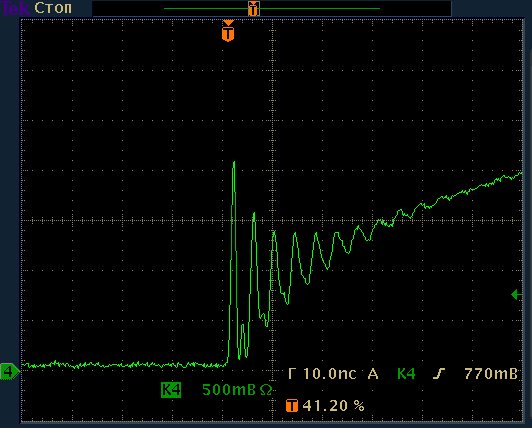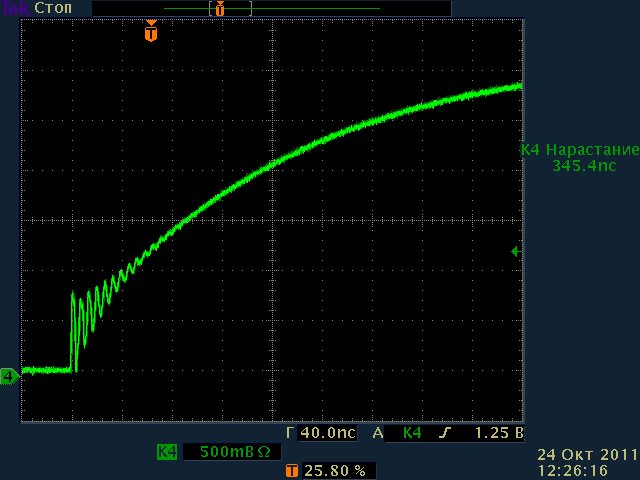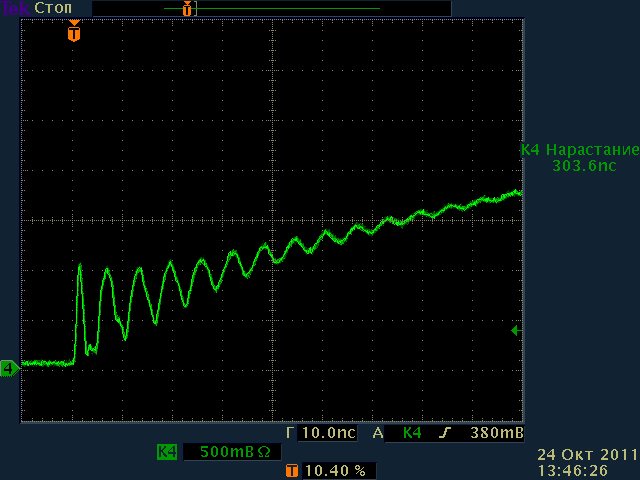Hi all,
Debugging the I2C bus errors on the custom board based on the OMAP-L138 I've found a strange phenomenon - a short spike on the SCL line at the beginning of low-to-high transition.

There are 5 devices on the bus, only OMAP has the master capability. Pull-up resistor value is 1.5k, estimated bus load capacitance is 40pF. I2C0 port of OMAP-L138 ( rev.A ) is used, all the IO banks are 3.3V powered
Is that the normal behavior for the L138 I2C SCL driver?
BR,
Denis



 .
.

